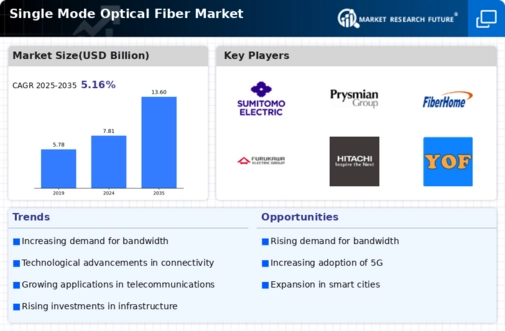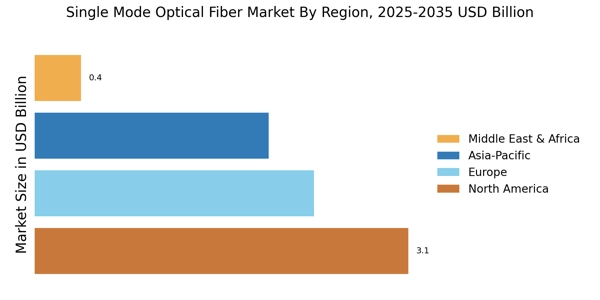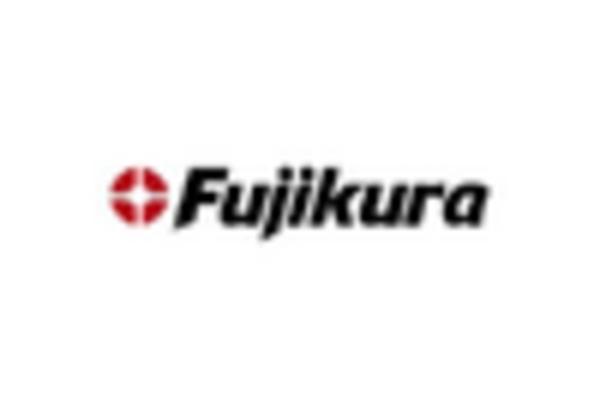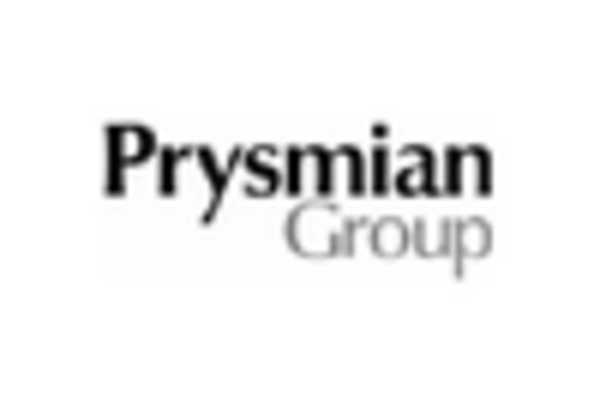Rising Demand for Data Centers
The rising demand for data centers is a crucial driver for the Single Mode Optical Fiber Market. With the exponential growth of data generation and storage needs, data centers are increasingly relying on high-performance optical fibers to manage and transmit data efficiently. Single mode optical fibers are preferred in data center applications due to their ability to support high data rates over long distances with minimal signal loss. Recent statistics indicate that the data center market is projected to grow significantly, with investments in infrastructure expected to exceed hundreds of billions of dollars in the next few years. This growth is likely to enhance the demand for single mode optical fibers, as they are essential for maintaining the speed and reliability required in modern data center operations.
Increasing Adoption of Cloud Computing
The increasing adoption of cloud computing services is a pivotal driver for the Single Mode Optical Fiber Market. As businesses migrate to cloud-based solutions, the demand for high-speed data transmission escalates. Single mode optical fibers, known for their ability to transmit data over long distances with minimal loss, are becoming essential in data centers and enterprise networks. According to industry reports, the cloud computing market is projected to grow at a compound annual growth rate of over 20% in the coming years. This growth necessitates robust infrastructure, where single mode optical fibers play a crucial role in ensuring efficient and reliable connectivity. Consequently, the expansion of cloud services is likely to propel the demand for single mode optical fibers, thereby influencing the overall market dynamics.
Expansion of Telecommunications Infrastructure
The expansion of telecommunications infrastructure is significantly influencing the Single Mode Optical Fiber Market. As countries invest in enhancing their communication networks, the need for high-capacity transmission mediums becomes apparent. Single mode optical fibers are favored for their superior performance in long-distance communication, which is essential for modern telecommunication systems. Recent data indicates that investments in telecommunications infrastructure are expected to reach trillions of dollars over the next decade. This investment trend is likely to drive the demand for single mode optical fibers, as they are integral to the deployment of next-generation networks, including 5G technology. The ongoing upgrades and expansions in telecommunications infrastructure are expected to create substantial opportunities for growth within the single mode optical fiber market.
Government Initiatives for Broadband Expansion
Government initiatives aimed at broadband expansion are playing a vital role in shaping the Single Mode Optical Fiber Market. Many governments are implementing policies to enhance internet accessibility, particularly in underserved regions. These initiatives often involve substantial investments in fiber optic infrastructure, where single mode optical fibers are favored for their efficiency in long-distance communication. Recent reports indicate that government funding for broadband projects is expected to reach significant levels, facilitating the deployment of high-speed internet services. This push for improved connectivity is likely to drive the demand for single mode optical fibers, as they are integral to achieving the goals of widespread broadband access. The ongoing government efforts to expand broadband infrastructure are expected to create favorable conditions for the growth of the single mode optical fiber market.
Surge in Internet of Things (IoT) Applications
The surge in Internet of Things (IoT) applications is emerging as a significant driver for the Single Mode Optical Fiber Market. As more devices become interconnected, the demand for reliable and high-speed data transmission increases. Single mode optical fibers are well-suited for IoT applications due to their ability to support high bandwidth and long-distance communication. Industry forecasts suggest that the number of connected IoT devices could reach over 30 billion by 2030, necessitating robust communication networks. This proliferation of IoT devices is likely to stimulate the demand for single mode optical fibers, as they provide the necessary infrastructure to support the vast amounts of data generated by these devices. The growth of IoT applications is expected to have a profound impact on the single mode optical fiber market.

















Leave a Comment